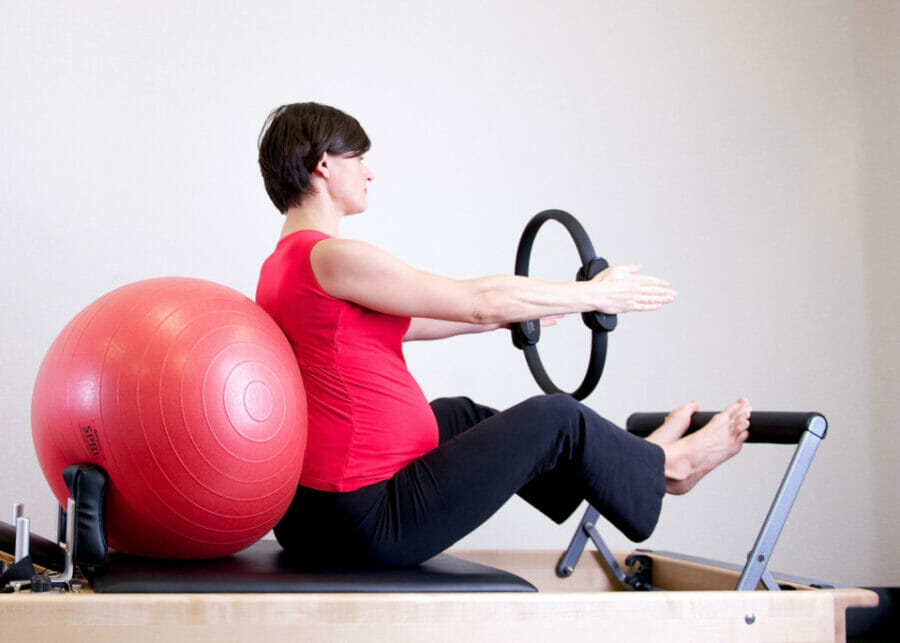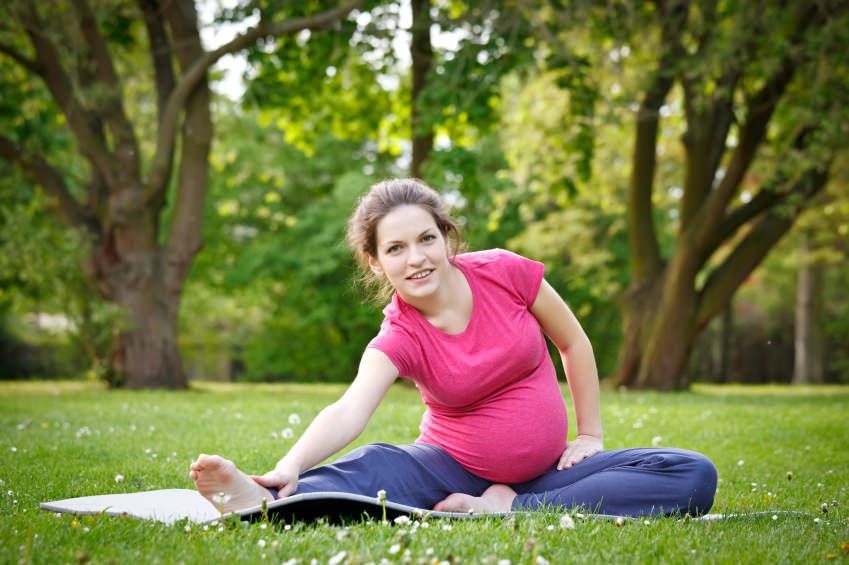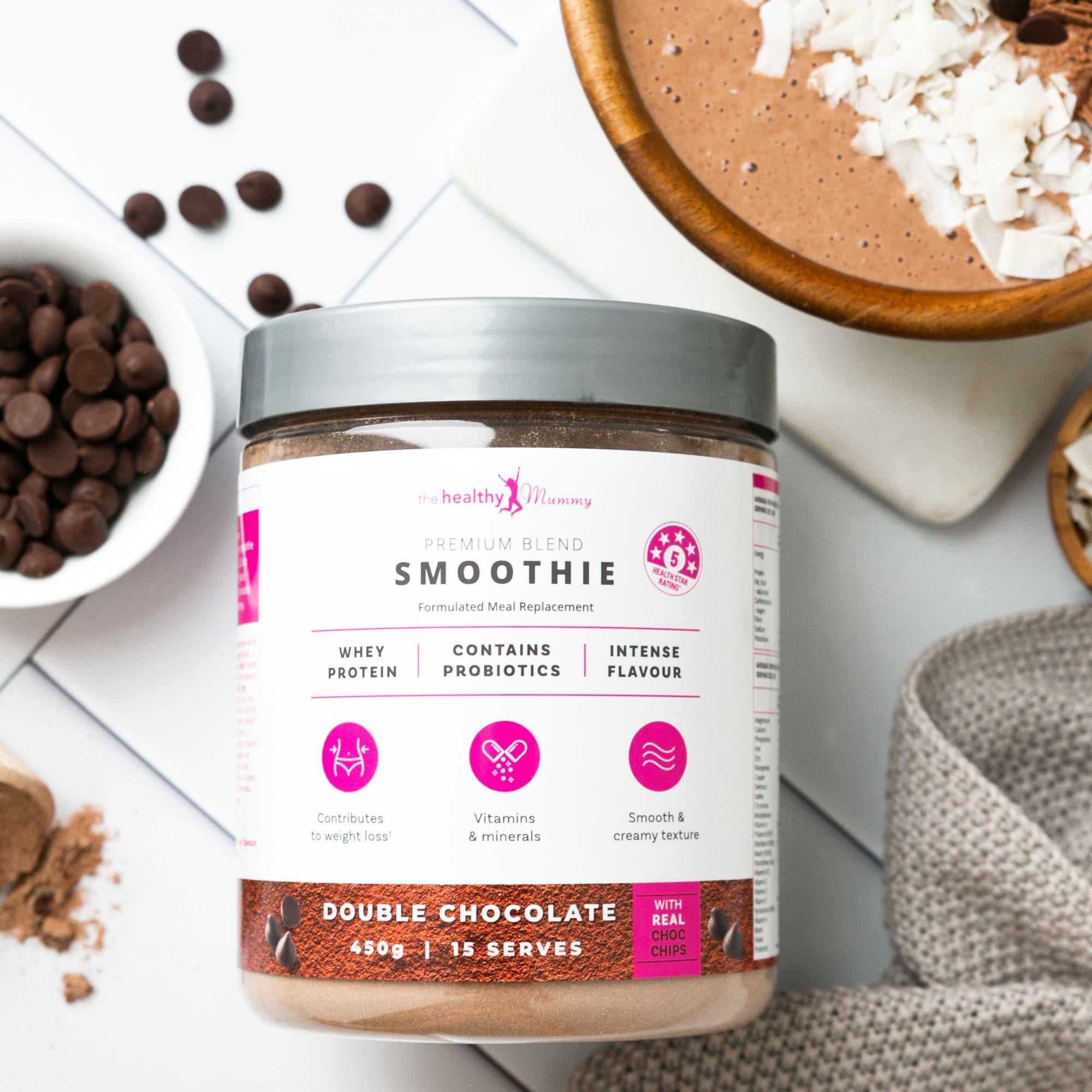Exercise in pregnancy
Exercise during pregnancy
A lot of women are nervous about exercising while they are pregnant, and that’s understandable, especially if you have suffered previous losses or don’t feel like yourself.
But there are so many potential health benefits if you do want to exercise while pregnant. For starters, exercise during pregnancy can help to prepare your body for childbirth and can make the birth easier.
Working out, as long as it’s not strenuous exercise, can also help to improve your mood and can lift your spirits, and if you are able, exercise could also help to alleviate some morning sickness symptoms.
Whether you are a regular exerciser or whether you are new to physical activity, there are some things you need to remember before exercising during pregnancy…

What kind of exercise can I do while pregnant?
The benefits of working out while pregnant
Light to moderate exercise is recommended while you are expecting and there are activities during pregnancy that are best to avoid.
However, here are some amazing benefits of exercise in pregnancy.
1. It can help improve your pelvic floor if you are doing pelvic floor exercises
Your pelvic floor is an array of muscle and ligaments that extend from your pubic bone all the way backwards to your tailbone. We often do not think about it until something goes wrong or our midwife or Pilates instructor talks about it.
The pelvic floor is an involuntary stabilising muscle. We trigger with exercises such as trampolining. After pregnancy, the tissues and muscles may have stretched and weakened and require strengthening again, sometimes very slowly.
After pregnancy, you may have a little postnatal incontinence. This is when you may pee in your pants a little when you laugh, sneeze or cough. The pelvic floor is to blame. It literally is worn out by baring the weight of your babe.
2. Decreases your risk of gestational diabetes and preeclampsia
The condition is monitored by testing blood glucose levels throughout pregnancy and is usually controlled by adopting a healthy eating plan and performing regular physical activity.
Some research has shown that a 30 minute walk after eating can help reduce blood sugar levels.
Light exercise is recommended during pregnancy. But don’t push your body too much.
3. Helps alleviate back pain
It is very rare for someone to sail through a healthy pregnancy without any sort of aches and pains.
Lower back pain is generally caused by the expanding uterus and belly adding pressure to your pelvis and buttocks.
In pregnancy the uterus expands 1,000 times the size from pre-pregnancy. It’s no wonder it can ache at times. Some women can feel a burning sensation, which stretches around to their belly.
But by following The Healthy Mummy Eating & Exercise Plan it is a good way to help you get some regular exercise and eat well to help with these aches and pains.

4. Improves your overall fitness
Just doing between two and three hours of light exercise, such as walking, yoga or swimming, a week may help improve your overall fitness during pregnancy.
While your body isn’t functioning like it used to pre-pregnancy, your body is working overtime to help grow a baby. And pregnancy and childbirth requires a lot of stamina in many cases, so it’s worth to get moving just a little bit.
5. It may help your body get ready for childbirth
If your due date is creeping up, then you might want to get your body moving. Whether you try some aerobic exercises with moderate-intensity or sign up to an exercise program, it’s interesting to know that doing some exercise may actually help your body get ready for childbirth.
6. Promotes a healthy weight gain during pregnancy
By just doing at least 30 minutes of moderate intensity workouts each week, you could be helping keep your weight in check.
While we promote a healthy weight gain during pregnancy, sometimes, people might tend to overeat or assume they are ‘eating for two’ and this can cause problems during the pregnancy or afterwards.
You should ideally be gaining between 11kg and 16kg while you are expecting. However, don’t worry if you gain extra weight but if you are worried, talk to your doctor.

What kind of exercises can I do while pregnant?
Here are some physical activity and exercise tips for your to follow so that you are safe during pregnancy…
1. Check with your doctor first
While exercise can help, you should ALWAYS check with your doctors and maternity team to see exactly how much you can do during pregnancy.
Every pregnancy is different, so while some women will be able to do lots of exercise, some women will have to rest for the majority of their pregnancy.
As a general rule, however, if you exercised regularly before your pregnancy, and you have no complications with the pregnancy, you can continue to exercise as before. As long as your medical practitioner believes the activity is safe. You may find it harder to keep up that level of stamina as your baby gets bigger in later pregnancy.
2. Avoid contact sports
You should also remember that although it is safe to do some exercise during pregnancy, you should stay away from dangerous sports, such as contact sports or any sports where you run the risk of falling over.
Intense exercise to avoid in pregnancy of include horse riding, skiing and mountain biking, as well as sports such as basketball and netball.
You can cycle in the early stages of pregnancy, although it is best to cycle on a stationary bike as your pregnancy progresses just so that you don’t run the risk of falling off your bike.

3. Be mindful while exercising as your body is going through changes
When pregnant you may notice many changes to your body, and this may affect your ability to exercise. For example, your body increases levels of a hormone known as relaxin. This hormone works to relax your pelvic muscles during childbirth.
But throughout the pregnancy, it also relaxes all of your muscles, so your body will be looser and therefore not as strong as it was before pregnancy, making you more susceptible to falls and injuries such as sprains. Therefore, you do need to be a little more careful when exercising than you were before pregnancy.
You are also carrying extra weight of pregnancy and vigorous exercise or intensive exercise may cause you to feel puffed out or put extra strain on your body.
4. Try sticking to gentle exercises
The best exercises to do during pregnancy are gentle exercises that help to strengthen and support your entire body.
Swimming is a great pregnancy exercise you can do from the first trimester, as the water supports your body and will enable you to exercise without any pressure on any of your joints. Yoga is also good, as it strengthens your entire body and will also help you through the labour. Be sure to let the tell the instructor that you’re pregnant.
However, just a walk in the park or walking to the shops can help to keep you fit during pregnancy. You could also do gentle dance exercise or exercise on a video game such as the Wii Fit or Xbox Kinect – just make sure you don’t wear yourself out and sit down as soon as you feel tired.
You could also try a prenatal pilates class or pregnancy yoga class, which are modified classes for pregnant women. There is no specific time that you should start pregnancy pilates, however, some women wait until the second trimester. This may be due to nausea!
5. Keep moving
You also need to keep moving when exercising. If you stay in one place, for example when you perform yoga poses, this can decrease blood flow to the uterus and can cause blood to pool in your legs.
This can make you feel dizzy and nauseated, which is not good for you or your baby. If you keep moving around, this prevents this from happening and will keep you and your baby safe.
6. Don’t get breathless

As a general rule, when exercising during pregnancy, you should be able to hold a conversation. If you are out of breath and unable to talk during exercise, then you are more than likely exercising too strenuously.
However, just because you are unable to exercise strenuously does not mean that that exercise is not beneficial – any exercise you do will be benefiting you and your baby. You should also always warm up before exercise to lower the risk of straining your muscles and ligaments – skipping this warm up increases your chance of aches and pains following your workout.
7. Wear comfy clothes
It is important that you wear the right clothes and shoes during exercising. For example, you may need to change your trainers if your feet have swollen during the pregnancy.
You also need to make sure you wear a well-fitting maternity bra to support your breasts and loose-fitting, breathable clothing that will allow you to exercise in comfort. You may well have to buy maternity exercise wear, but it will benefit you in the long run.
8. Stay hydrated
You also need to make sure that you drink lots of water. When exercising, you sweat, so you lose water. Therefore you need to replenish those water levels, or you run the risk of becoming dehydrated.
Dehydration can cause contractions and can raise your body temperature to dangerous levels – so make sure you drink plenty of water before exercising, during exercising, and after exercising.
In hot weather, you’ll need to drink even more. If you are exercising and experience any sudden pains in your abdomen or if you become overly dizzy and sick, stop exercising and seek medical attention as soon as possible.
Be mindful of muscle separation
Pregnancy can be stressful for your body and too much heavy exercise may cause your core muscles to separate.
Known as diastasis recti or separated abs, this is a common occurrence and often appears in the second trimester of pregnancy.
As the baby grows, so does the chance of you developing separated abs. Generally, this is no problem, as the female body is designed to foster and birth babies.
But on an aesthetic level, a lot of women are taken aback by the unseemly bulging ridge that can form and grow along the midline of your belly.

Generally, your chances of having diastasis recti are higher if you have been pregnant several times, as the muscles stretch every time and become a little like a stretched rubber band that develops cracks more easily.
Also, if you don’t exercise at all during pregnancy, you’re statistically more likely to develop the condition – and it’s likely to be more pronounced. Another good incentive to keep up moderate exercise!
If you suspect you have muscle separation, do not do anything without speaking to your doctor first, as exercise could make it worse.
5 safe exercises to do during pregnancy
A healthy pregnancy includes healthy eating choices, listening to your body and taking time out when you need it plus enjoying some exercise that is right for you.
You should always discuss what’s suitable for you with your GP, midwife or obstetrician when it comes to exercising during pregnancy as everyone is different but for the majority of pregnant mummies, moving in some way each day is great for your physical and also mental health.

Pregnancy isn’t necessarily the time to train to do a marathon but rather to include some regular exercise to have a healthy pregnancy. Gentle cardio, stretching and strengthening are all ideal options when it comes to pregnancy exercise.
1. Aim for 20 minutes a day
Keep things simple and focus on doing 20 minutes of exercise every day and if you do more, great. Don’t set an unrealistic goal of “I’m going to exercise for 90minutes every day” if you know you will never fit that in.
An easier goal of 20 minutes every day is achievable and great for your health during pregnancy.
2. Keep it local
Choosing exercise that doesn’t involve you having to drive for ages to get to a gym will make it more likely you will exercise more frequently.
Going for a walk, getting out a yoga mat and doing some stretches or walking to your local park and doing some strengthening exercises will make it so much easier for you to exercise regularly as it’s easy, you don’t have to drive, find a park, stop at the shops, wait in traffic etc etc!
The Healthy Mummy Pregnancy Eating & Exercise Guide contains a plan that includes fantastic stretches, exercises and movements that you can easily do at home or at the local park to make exercise during pregnancy really easy.
3. Try something different
Pregnancy is a great time to try some different exercises you may not normally do. Find a local yoga class that has a pregnancy session and learn with a professional about how stretching can really help during a healthy pregnancy.
Find out about pregnancy pilates or buy a block of 10 visits or similar to your local pool and try out some laps. Your local council may run or know about various pregnancy focused exercise classes that will get you moving as well as help you de-stress and relax. 
4. Get walking
Walking is a great exercise to do when pregnant as it gets you moving, stretches your joints, is low impact and is free. Don’t think about it too much, just get going.
Walk around your neighbourhood, walk to your local park and do a pregnancy focused exercise circuit like that found in The Healthy Mummy Pregnancy Eating & Exercise Guide or choose to walk to certain destinations e.g. to meet a friend for a cup of herbal tea and a healthy snack. Don’t push yourself though, always ensure you feel comfortable and aren’t straining when walking whilst pregnant, you don’t want to walk so far that you exhaust yourself.
5. Listen
An important part of exercising whilst pregnant is listening to your body. If you have strange aches and pains, feel short of breath, get dizzy or in anyway don’t feel like things are ‘right’ you should seek the advice of your medical professionals as there could be something else going on that needs to be addressed.
Listen to what your body is saying – are you really tired? Then do some gentle stretches or mediation to relax. Are you feeling sore? Go for a short walk to get everything moving.
You ultimately know what feels right for you. Including some form of exercise into each day will help to benefit your body and mind whilst pregnant so remember to speak to your obstetrician, GP or midwife about what will suit you best during your pregnancy.

Easy workouts pregnant women can do:
- Pregnancy yoga (a specialised class for other women expecting in your area)
- Prenatal pilates
- Walking
- Swimming
Exercises to avoid while pregnant:
- Contact sports such as soccer and netball
- Skiing, due to the risk of falling
- Gymnastics, as your centre of gravity changes while pregnant
- Exercises that force you to bounce such as horseback riding
- Scuba diving, as the decompression sickness might put your baby at risk
The best exercises to help your body get ready for childbirth and labour
1. Yoga
2. Deep squats
3. Kegels

4. Bouncing on an exercise ball
5. Perineal Massage
While giving birth, the perineum stretches and can sometimes tears. So in order to help prevent tearing, you could try stretching and massaging perineum, between your vagina and anus, for a few weeks before your due date.
Starting from around the 34 week mark, you can use coconut oil or vitamin E cream to rub in to the skin at least once a day.
Exercise during pregnancy could reduce symptoms of postnatal depression
It seems it may also be a way to help expecting mothers from reducing their chances of developing postnatal depression.
A new study has found that women who are active during and after pregnancy are less likely to suffer from depressive feelings after their baby is born.

What is postnatal depression?
Postnatal depression (PND) doesn’t discriminate – it can hit anyone at any time, mums and dads included.
Stats reveal it affects one in six new mums and can occur after the first, last or after all pregnancies. Symptoms include anxiety, insecurity, guilt, irritability and tiredness.
Currently, there is no known cause for it with many experts believing it’s down to the surge in hormones a woman experiences during and after pregnancy.
Study on women with postnatal depression who exercised during pregnancy
Researchers at the University of Castilla-La Mancha in Cuenca, Spain, analysed data from 12 controlled trials of exercise interventions during or after pregnancy between 1990 and 2016.
932 women took part in the study and each were divided into different groups. Those who were in the groups taking part in physical activity, were told to do exercises such as stretching and breathing, walking programs, aerobics, Pilates and yoga.
Compared to women who didn’t exercise, the women in the groups that did exercise throughout pregnancy, were found to have fewer depressive symptoms.

The women in the study did stretching and breathing, walking programs, aerobics, Pilates and yoga. “We expected that physical activity could reduce postpartum depressive symptoms,” study co-author Celia Alvarez-Bueno told Reuters Health.
“However, we were pleasantly surprised when we found that exercise after pregnancy also reduced depression among the women who didn’t have diagnosable symptoms.
“The negative consequences of postpartum depression not only affect the mother but also the child, who can suffer poor emotional and cognitive development.
“That’s why it’s important to test the most effective strategies to prevent this disorder or mitigate the consequences.”
The American College of Obstetrics and Gynaecology recommends pregnant women engage in 30 minutes of moderate exercise most days of the week.
Seeking support for postnatal depression
 If you (or someone you know) is struggling with depression, then remember you are not alone. There are many support services out there to help you get through your mental health battles.
If you (or someone you know) is struggling with depression, then remember you are not alone. There are many support services out there to help you get through your mental health battles.
PANDA National Helpline – 1300 726 306
Beyond Blue – 1300 224 636
The Pregnancy Smoothie is designed to complement, not replace, your prenatal vitamin intake.









